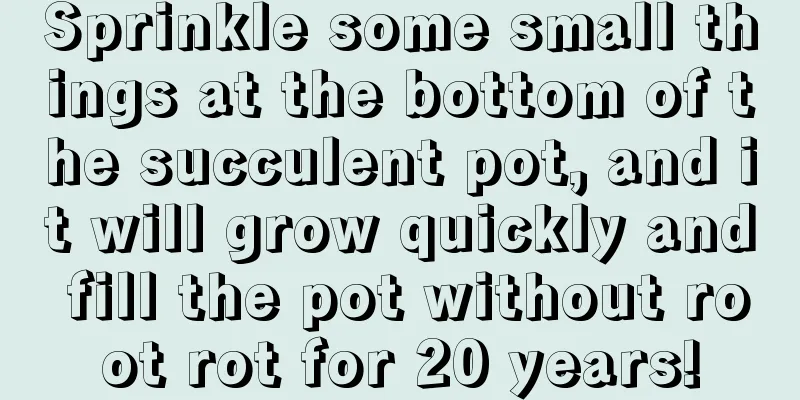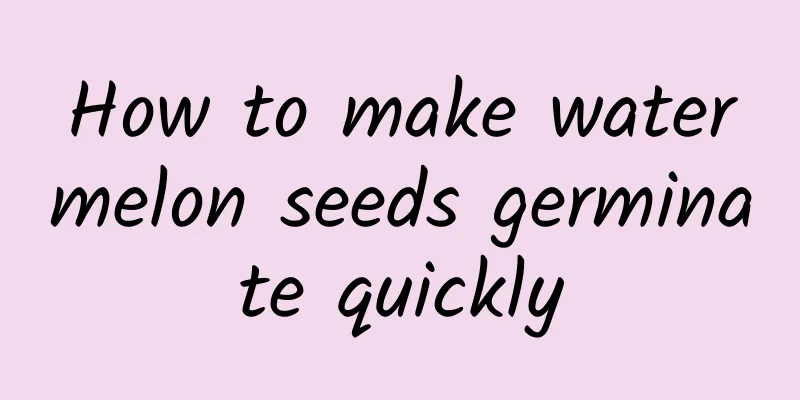Sprinkle some small things at the bottom of the succulent pot, and it will grow quickly and fill the pot without root rot for 20 years!

Put some of this in a succulent pot and it will grow to fill the pot!Succulents are small in size and require little fertilizer, so they are generally not fertilized with self-fermented organic fertilizers. Instead, they are given succulent granular slow-release fertilizers that have a slow fertilizing effect and do not damage the roots. It can slowly replenish nutrients to succulents, allowing them to grow three times faster than others! 1. Succulent granular slow-release fertilizer is sold in flower markets and online. It is not expensive, usually around 10 yuan a bottle, and can be used for several years! 2. The use of slow-release fertilizer is very simple and flexible. When repotting succulents, you can sprinkle 1-2 spoons of it on the bottom of the pot as base fertilizer for the succulents to gradually replenish nutrients to the roots. 3. You can also scoop a small spoonful of granular slow-release fertilizer and sprinkle it directly on the surface of the succulent pot soil, or dig a hole and bury it in the soil. When it's time to water, the nutrients in the slow-release fertilizer will be absorbed by the roots along with the water, and the succulents will grow rapidly! Sprinkle some of it at the bottom of a succulent pot and it will grow into a waterfall in one year!In addition to granular slow-release fertilizers, you can also use bone meal to fertilize succulents. It is rich in phosphorus and calcium, releases nutrients slowly, and does not damage the roots. It can make succulents grow strong and round, and not easily get sick! 1. Don’t throw away the leftover bones from eating chicken, duck, etc. Collect them. 2. Wash the bones several times with clean water and soak them for half a day to remove the salt. 3. Put the bones into a pressure cooker, add water and stew until they are soft. Then smash the bones with a hammer and expose them to the sun for a few days. The bone meal is ready! 3. When applying bone meal to succulents, you can sprinkle 2 spoons of it on the bottom of the pot when repotting as base fertilizer, once a year; you can also dig 2-3 small holes on the edge of the pot, scoop half a spoonful into the hole, cover it with soil, and use it as top dressing. Once every 2 months. If you lay this layer at the bottom of a succulent pot, the roots won’t rot for 10 years!Succulents are particularly drought-resistant. If they are watered too much and the soil is not breathable, their roots will easily rot. Therefore, the soil must be drained and breathable, and a layer of expanded clay must be placed at the bottom of the pot! 1. Expanded clay is a planting material known to most succulent lovers. It is like small balls, very light, loose and porous inside, loose and breathable, and can absorb excess water, making it very suitable for growing succulents. 2. Before planting succulents, place 2-3 layers of expanded clay at the bottom of the succulent flowerpot, then fill it with succulent soil and plant the succulents! 3. The expanded clay at the bottom acts as a drainage and breathable layer for succulents. If you water too much, the expanded clay will absorb excess water at the bottom of the pot to prevent water accumulation and root rot. In addition, the breathability of expanded clay is very beneficial to the growth of the roots of succulents, making the roots thicker and more numerous! Lay this layer at the bottom of the succulent pot, and you will never get black rot again!In addition to expanded clay, which can prevent root rot in succulents, there is another good thing that can be found everywhere on the roadside and costs no money. It can be placed at the bottom of the pot to prevent root rot in succulents. It is pine needles! 1. Go to the pine trees in the green belt and collect some dry, black or brown pine needles. Avoid those green pine needles that have just fallen. 2. Spread the collected pine needles in the sun and expose them to the sun for 3-5 days. Or spray some carbendazim solution to disinfect and sterilize. 3. Spread the processed pine needles in a layer at the bottom of the succulent pot, with a thickness of about 3-5 cm. 4. Then, pour nutrient soil into the pot and plant succulents, and you’re done! Pine needles are loose and breathable, and can perform a good drainage function, preventing succulents from accumulating water and rotting their roots, and keeping the root system strong and dense! Succulent care tips, I will introduce Huahua here first. If flower lovers want to know other aspects of succulent care, You can leave a message to Huahua in the lower right corner! |
Recommend
What should I do if the potted azalea leaves fall off? What is the reason?
1. What to do with fallen leaves 1. Reasonable li...
Why are the leaves of the peace lily turning yellow?
1. Waterlogging and root rot Reason: During the g...
How to grow coral tree succulent
1. Breeding environment 1. Soil: To grow coral tr...
Cutting propagation method of Woniu and Tiger's roll
Cutting propagation time of Woniu and Tiger's...
It only takes a few steps to grow cut spider plants in water and they will take root very quickly!
1. Cultivate aerial roots Some creeping stems wil...
Which month is suitable for planting green beans?
When to plant green beans Green beans are best pl...
Don’t throw away leftover fruit peels! Growing flowers is useful
Grapefruit peel First: Deodorization When using k...
What is the difference between Asparagus and Ophiopogon japonicus
1. Different families Asparagus: It is a plant be...
The difference between Prunus mume and Prunus armeniaca
1. Different plant heights Prunus armeniaca is a ...
In which month does bougainvillea sprout?
1. Which month does it germinate? Generally speak...
Cultivation method of North China Pearl Bush
1. Soil: The North China Pearl Bush has strong ad...
How long is the life span of a forsythia tree? When does it start to bear fruit?
1. How long is the life span of the Forsythia tre...
These 17 Chinese rose species have large and full flowers, much more beautiful than European roses!
Soft fragrant red Soft and Fragrant Red is a clas...
Can fish scales be used as fertilizer?
Fish scales as fertilizer Fish scales can be used...
Can banyan bonsai be covered with moss? How to grow moss
1. Can banyan bonsai be covered with moss? Banyan...









